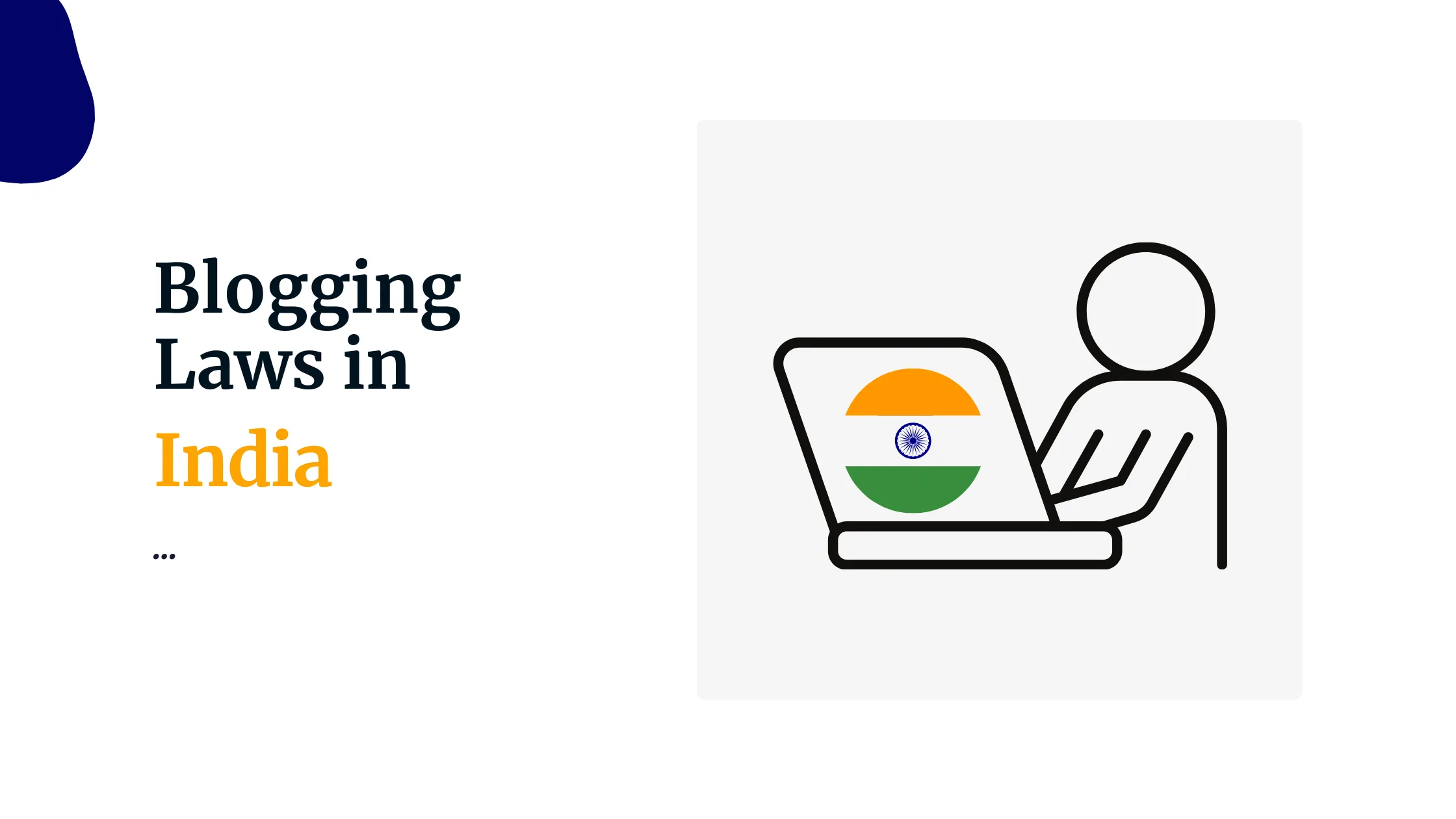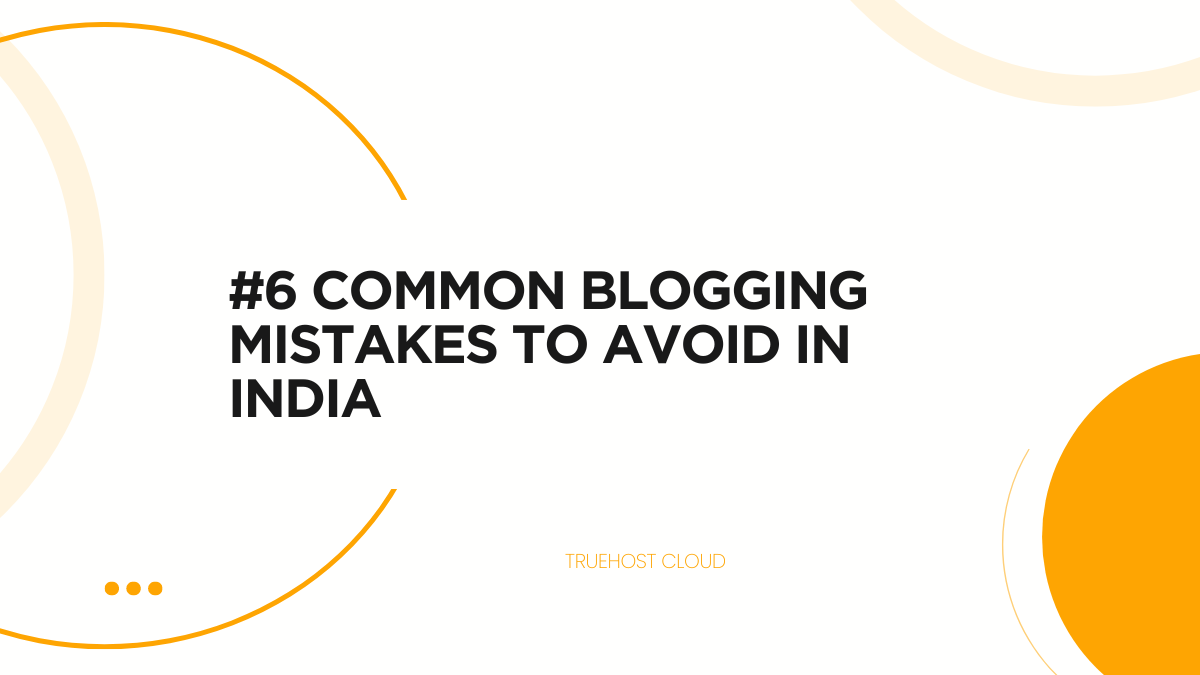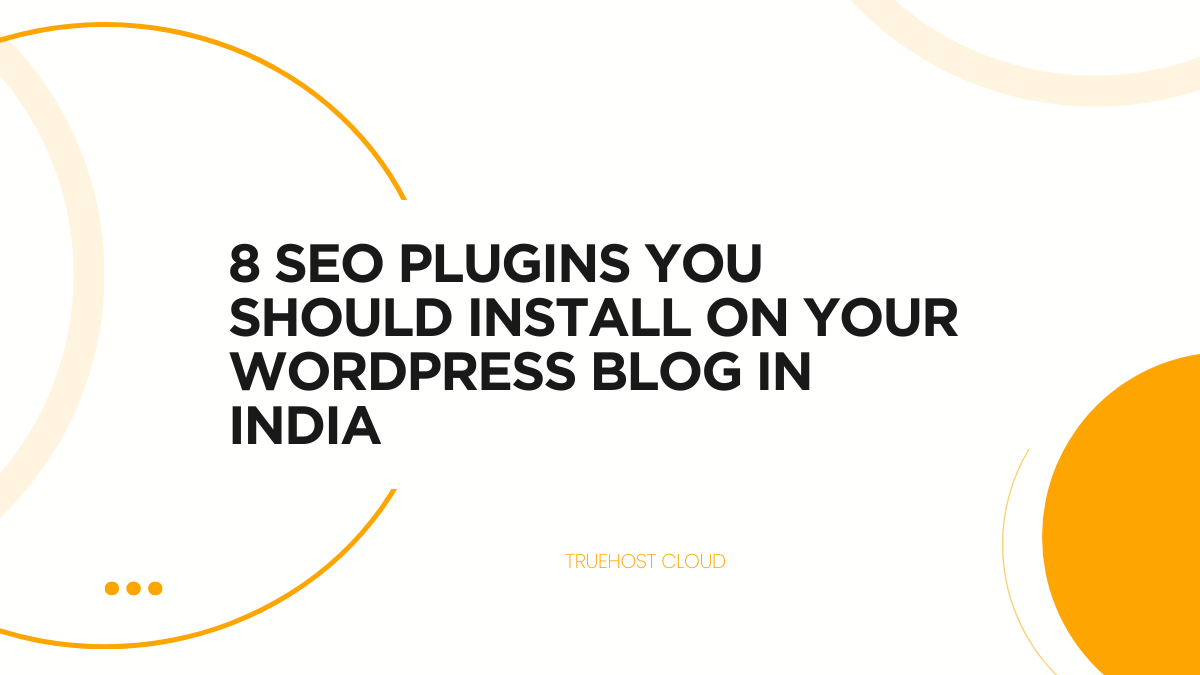Last updated on September 11th, 2023 at 06:39 am
Blogging is one of the most popular ways to communicate and share your ideas with the world. In this complete guide for startups and entrepreneurs, we will teach you everything you need to know about blogging in India so that you can start building a following and growing your business.
We will cover topics such as choosing a blog platform, setting up your blog, creating content, promoting your blog, and more.
The Indian blogosphere has grown exponentially in the past few years, with more and more startups emerging to take advantage of the country’s huge population and burgeoning internet usage.
With so much potential and so many resources available, blogging can be a powerful tool for startups to grow their brands and networks.
There are a few things to keep in mind if you want to start blogging as a startup in India.
And we are going to cover most in this blog post.
What is blogging?
Truth is, there is no one definitive answer when it comes to defining blogging for startups and entrepreneurs.
However, in general, a blog is a type of online publication that allows an individual or business to share their thoughts, opinions, and experiences with the world.
Additionally, many startups and entrepreneurs use blogs as a way to build relationships with their audience, identify and address feedback, and promote their products or service.
Talking of building relationships, what are the other reasons startups in India should get into blogging?
Why should startups and entrepreneurs get into blogging?
a). Blogging can help you build a community for your startup
Blogging in India is a great way to connect with customers and create a community for your startup.
It can also help you attract new customers, connect with other entrepreneurs, and learn from others in your industry.
By sharing your story, you can also inspire other entrepreneurs and startups.
b). Blogging can help you get feedback on your product or service from potential customers
Blogging can be an important tool for startups and entrepreneurs to get feedback on their products or service from potential customers.
It can also help to build a following of people who are interested in what you are doing.
c). Blogging can help you position yourself as an expert in your field
Additionally, blogging can help to establish yourself as an expert in your field.
When you blog, be sure to write about topics that are relevant to your target audience.
Share your insights, offer advice, and provide valuable information that people will find useful.
Write in a clear and concise style, and be sure to proofread your work before publishing it.
Remember to post regularly, and share your blogs with your social media followers.
By blogging for startups and entrepreneurs, you can build credibility and attract new customers and clients.
d). Blogging can help you drive traffic to your website
Blogging in India for startups can also be a powerful tool to help drive traffic to your website and boost your SEO.
But, it is not enough to simply create a blog and post content randomly. You need to have a strategy in place and post content that is relevant to your target audience.
One of the best ways to generate traffic is by blogging about topics that are relevant to your industry or niche. When you write about something that people are interested in, they will be more likely to share your content with others.
And, when other people share your content, it helps improve your SEO ranking.
Another way to drive traffic to your website through blogging is by using keywords strategically in your posts. When you include keywords in your content, it helps Google and other search engines understand what your blog is all about.
e). Blogging can help you build relationships with other bloggers and journalists
Blogging is a great way to build relationships with other bloggers and journalists.
When you blog, you are providing valuable content for your readers, and you are also giving other bloggers and journalists a reason to link to your blog and write about you.
At the same time, blogging can help you build a following of people who are interested in your startup or business. When you blog consistently, you’ll start to develop a readership that is interested in what you have to say.
And finally, blogging in India for startups can help you get press coverage for your startup or business. When you write interesting and compelling blog posts, reporters will take notice and may want to write about your company.
What Types Of Content To Blog About
If you want to have a successful blog for your startup, then you need to create engaging and interesting content. Here are some tips on what types of content to blog about:
a). Blog Articles
Startups should publish blog articles to attract attention and grow their audience.
In fact, a well-written blog article can introduce a startup to a new audience and help build trust with existing customers.
And blog articles are a great way to share news and updates about a startup, as well as insights into the industry or market the startup is operating in.
Remember, publishing blog articles on a regular basis is an effective way to keep a startup’s website updated and relevant.
Although writing high-quality blog articles takes time and effort, but the payoff can be worth it in terms of increased exposure and traffic.
b). Case Studies
Startups in India should also publish case studies to show off their work and attract potential customers.
Case studies are a great way to show off your company’s work and attract potential customers.
They can also help you land new clients and partnerships, as well as educate your audience on your products or services.
Keep this in mind:
When putting together a case study, make sure to highlight the challenges you faced and how you overcame them.
Be sure to include stats and figures that illustrate the impact your work had on the customer or client you’re featuring.
Finally, make sure to design your case study in an engaging and visually appealing way.
c). Lead Magnets
If you’re a startup, you should be publishing lead magnets.
What are lead magnets?
They are essentially gated content – content that’s available only to those who provide their email address or some other form of contact information.
Why is gated content so important?
Because they allow you to capture leads from your website. And the more leads you capture, the more opportunities you have to convert those leads into customers.
How can you create a lead magnet? It is actually pretty simple.
Start by creating a piece of content that’s relevant to your target audience. Then, make sure that it’s available only to those who provide their contact information.
Finally, promote it on your website and social media channels.
d). Email Marketing
As a startup or an entrepreneur in India, you already know that email marketing is one of the most efficient ways to reach your target audience.
It allows you to build a relationship with leads and keep them up-to-date on your company’s latest news and products. If you are not already sending out newsletters, you should start immediately.
There are many benefits to email marketing.
For starters, it’s an affordable way to reach a large number of people. You can also track how many people open and click through your newsletters, giving you valuable insights into what interests your audience.
And because email is a direct channel, you can be sure that your messages will be seen by your leads.
There are a few things to keep in mind when creating your email marketing strategy.
First, make sure that your newsletters are interesting and relevant to your audience.
Collecting email addresses is much easier when you have good content to entice readers to open.
Another key point is to not bombard your subscribers with an abundance of emails. If you can get a person to open your newsletter once, chances are good that they will keep it up for the foreseeable future.
One or two newsletters per month is more than enough if you want to keep your subscribers interested.
An email marketing strategy that is effective will be well-organized and contain specific information relevant to your audience. This may include: new product announcements, promotional offers, announcements about new services or events, etc.
e). Social Media Content
Social media is a powerful tool that all businesses, including startups here in India, should be using to connect with customers and promote their products or services.
By being active on social media, startups can reach a larger audience and create a connection with potential and current customers.
Additionally, social media can be used to gather feedback from customers and learn what they want or need.
f). Podcasts
Another type of content for startups is podcasts.
Podcasts are a great way to get your voice and message out there, and startup owners would be wise to host their own.
It is a great way to connect with customers and promote your product or service.
By hosting a podcast as a startup in India, you can share your company’s story and connect with potential customers on a personal level.
e). Videos
Creating videos is a great way to share your startup with the world. They can be used to explain your product or service, walk through how it works, or highlight new features.
Videos are also a great way to update your followers on what’s going on with your startup. They can help keep people engaged and interested in what you are doing.
How To Blog For Your Startup
Now that you know what type of content to publish on your startup blog, let us look at how to get started.
1). Choose A Platform
When it comes to starting a blog for your startup in India, there are a lot of different platforms to choose from. WordPress, Tumblr, and Medium are all popular choices, but they each have their own strengths and weaknesses.
WordPress is the most popular blogging platform in the world. It’s open source, which means it’s free to use, and it has a huge user base. There are tons of plugins and themes available, making it easy to customize your blog. However, WordPress can be a bit overwhelming for beginners.
Tumblr is a simpler platform that’s popular with younger users. It is easy to use and has a large community of bloggers. But it doesn’t offer as many customization options as WordPress.
Medium is a newer platform that’s growing in popularity. It’s simple to use and has a beautiful interface.
2). Establish A Voice & Tone
As we mentioned earlier, blogging for your startup is a great way to connect with customers and create a voice and tone for your company.
But, it can be difficult to know where to start.
Here are some tips:
- Decide on the purpose of your blog. Do you want to provide information, build a community, or sell products/services?
- Be consistent with your messaging. Make sure the content of your blog matches the overall tone and message of your company.
- Create interesting and engaging content. This will keep people coming back for more.
- Be personal and transparent. Let readers get to know you and your team.
- Respond to comments and feedback. Engage with your readers and show that you’re listening to what they have to say.
The tone of your blog is an important factor in keeping readers engaged. It can set the tone for the content and help readers relate to you and your startup.
3). Know Your Audience
When you’re blogging for your startup in India, it’s important to know your audience.
Who are you trying to reach with your content?
What do they care about?
Once you know your audience, you can start creating content that’s relevant and interesting to them. Make sure to keep in mind what they are looking for when they visit your blog.
By answering customer questions and providing valuable content, you can create a connection with your audience that can help boost sales and encourage loyalty.
4). Hosting Provider is a Game Changer
Choosing the right hosting provider is a critical decision for any startup in India.
A reliable, experienced hosting partner can make all the difference in the world when it comes to keeping your blog up and running – and keeping your business online.
At Truehost India, we pride ourselves on being a flexible, reliable hosting partner that can accommodate any need or budget. We understand that startups need quick response times and superior customer service, and we work hard to provide both.
If you are looking for a hosting provider in India that will help your startup succeed, look no further than Truehost.
We offer a wide range of services and support that will make your blog run smoothly – and keep your business online.
5). Create Engaging Content
When it comes to blogging in India for startups, content is king!
Unfortunately, creating content for your startup blog can seem daunting, but with a little forethought and organization, it can be easy and engaging for your readers. Here are some tips to help you get started:
- Format your posts well. Use headings, lists, and visuals to break up the text and make it easier to read.
- Answer questions that your readers might have. Write about what you know and think about what your readers might want to know.
- Keep it simple. Use easy-to-read language that will appeal to a wide audience.
6). Promote Your Posts
When you start a blog for your startup in India, the purpose is to get your name and product out there.
As such, you want to write interesting posts that will attract attention and get people to visit your website.
Luckily, you can promote your posts in a variety of ways, some free and some paid.
One free way to promote your posts in India is to submit them to online directories and article submission websites. There are many of these websites, and most of them are free to use.
Another way to get exposure to your posts is through social media. You can post links to your articles on Facebook, Twitter, LinkedIn, and other social media sites.
Then there is paid advertising.
Here, you can buy ads on Google, Facebook, Twitter, and other platforms. Or you can work with influencers to get them to share your content with their followers.
Tools To Help With Blogging For Your Startup
As you can see, blogging in India for startups is something you cannot afford to ignore. It comes with a bag full of perks.
But it can sometimes get hard, that is where tools come in handy.
a). WordPress
What is blogging without WordPress in India?
WordPress is a popular content management system (CMS) that helps you easily create a website or blog from scratch. It’s free and open-source software released under the GPL.
In fact, WordPress is used by millions of people around the world, including many large organizations, such as The Guardian, Forbes, and The New York Times.
With it, you can start publishing blogs in no time.
To get started, install wordpress on your domain and start publishing.
b). Hootsuite
Hootsuite provides a suite of tools to help with blogging in India for startups.
These include a scheduling feature that allows you to publish posts ahead of time and an analytics tool that shows how your posts are performing.
And a social media tool that helps you promote your blog posts on Twitter, Facebook, and LinkedIn.
c). Google Analytics
Google Analytics is a great tool to help with blogging for your startup in India.
It provides you with information on who is visiting your website, what pages they are visiting, and how long they are staying on each page. This information can help you to determine which topics are most popular with your audience and which pages need improvement.
Additionally, Google Analytics can help you to track the success of your marketing campaigns and measure the impact of your blog content on website traffic.
d). BuzzSumo
Another tool on our list of best blogging tools for startups is BuzzSumo.
BuzzSumo is a great tool to help with content strategy for your startup. It allows you to see the most popular content across all social media platforms. This can help you determine what content is resonating with your audience and figure out what topics to focus on.
Additionally, BuzzSumo can help you track your competitors’ content and see what’s working well for them. This information can give you ideas for creating your own successful content.
e). Yoast SEO
When you are starting a blog for your startup in India, you need to make sure you’re doing everything you can to optimize it for search engines. One of the best tools out there for helping with that is Yoast SEO.
Yoast SEO is a plugin for WordPress that analyzes your content and gives you feedback on how to improve it. It also helps you choose the right keywords to target, so you can get more traffic from search engines.
If you are not using WordPress, there are other tools out there that can help with SEO, such as CloudWay’s “SEO for Startups” guide.
But Yoast SEO is one of the best, and it’s free!
So if you’re looking to give your blog the best chance of success, be sure to use Yoast SEO or a tool like it.
By no means, this is a complete list of the best tools to grow your business. But these should give you a nice headstart in the right direction.
How To Measure The Success Of Your Startup Blog
As we have covered, almost any business can benefit from having a blog, but for startups in India, it can be especially useful for promoting your company and driving traffic to your website.
But how can you tell if your startup blog is successful? Here are a few tips on how to measure the success of your startup blog:
Start by setting up some basic tracking tools. Google Analytics is a great way to measure website traffic, and you can use a tool like Hootsuite to track how many people are sharing your content on social media.
Then:
a). Look at your website traffic
One of the best ways to measure the success of your blog is to look at your website traffic.
If you are seeing an increase in visitors since you started blogging, then that’s a good indication that you’re doing something right.
b). Check out your social media stats
Another way to measure the impact of your blog is to look at your social media stats.
Are people talking about you more on Twitter or Facebook?
Are they clicking through to read more articles on your website?
c). Assess the engagement
The number of readers and how engaged they are are two important factors.
Once you have that data in hand, start looking for ways to increase engagement.
Are people commenting on your posts?
Are they sharing them with their friends?
If not, what can you do to encourage more interaction?
Focus on creating content that people will want to read and share.
d). Look at the number of leads
A startup business blog is a powerful tool for generating leads and growing a company in India.
However, in order to measure the success of your startup blog, you must first understand how to track website visitors and leads.
Once you know how to measure website traffic and leads, you can use this data to improve your blog strategy and increase your ROI.
Final Thoughts
In conclusion, blogging can be an extremely powerful tool for startups and entrepreneurs in India.
It can help you to build a brand, reach a wider audience, and share your message with the world.
If you are interested in starting a blog, or are already blogging, be sure to follow these tips to get the most out of your experience.
And don’t forget to keep track of the latest blogging trends, so that you can stay ahead of the competition.








